 Ten Plumbing Mistakes Beginners Make and How to Avoid Them
Ten Plumbing Mistakes Beginners Make and How to Avoid Them

Where do beginner plumbing projects go wrong—and what crucial steps get missed?
Plumbing looks deceptively simple, but UK homes and commercial property tell a different storey once a pipe is open, a joint is cracked, or a valve won’t shift. Beginners—whether DIY-minded homeowners, portfolio landlords, or new property managers—fall into the same traps not because they don’t care, but because so much is invisible, regulated, and absolutely unforgiving. The truth? Water follows gravity, not optimism. A single missed step costs more than the original leak ever did.
Sometimes, all it takes is an ignored valve or the wrong fitting, and you’re setting up a repair bill that turns a weekend project into a months-long headache.
The Most Common Pitfalls: UK Plumbing’s Silent Traps
Partial Isolation—Not as “Off” as You Think
You turn the stopcock, check the tap, and start unscrewing. But what about that secondary branch, the awkward communal riser in a flat, the hidden isolator an appliance fitter left years back? Water left in pipe legs or shared supplies greets you with a sudden flood just as you relax. It’s the flaw nearly every DIY or multitasking landlord only discovers once floors or tenant belongings are already wet.
Wrong Materials, Wrong Combinations
UK stockists and the internet make it easy to fit copper, pushfit, plastic, and compression all in a single run. But mixing metals like copper and steel, or using an unapproved (WRAS-uncertified) fitting, sets up galvanic corrosion—leading to leaks that are neither “normal wear” nor covered by insurance. If you can’t verify the part, you risk your entire system (and possibly your compliance status as a landlord).
Skipping Full Leak and Pressure Testing
Fired up and finished—that’s where many jobs should pause. Unless you fill, isolate, and watch your work for pressure drops or weeping joints, a tiny mistake (sometimes sealed out of sight) grows into months-later damp, rotting skirting, and denied insurance claims. The ten-minute test is cheaper than ripping out tiles.
Heating System Oversights
Modern heating—especially underfloor or multi-zone setups—demands precise flow logic. Routing return pipes incorrectly, failing to balance systems, or misunderstanding TRVs leads to cold rooms and soaring bills, all while every “fix” sends more air or sludge around the system.
Regulatory Blind Spots: The Law You Can’t See
Non-professionals miss that many works—anything gas, unvented, major waste, or electric in a wet zone—are outright restricted by Parts G, H, P of Building Regs and Water Regulations. If you instal something “close enough,” the real penalty often comes years later: failed sales, voided warranties, or fines when paperwork doesn’t line up.
The quiet reality: most rookie mistakes are silent. They seep, fail compliance, or simply set up your next emergency callout. What you don’t realise today is what puts your budget and property value at risk tomorrow.
What practical steps actually prevent beginner plumbing disasters?
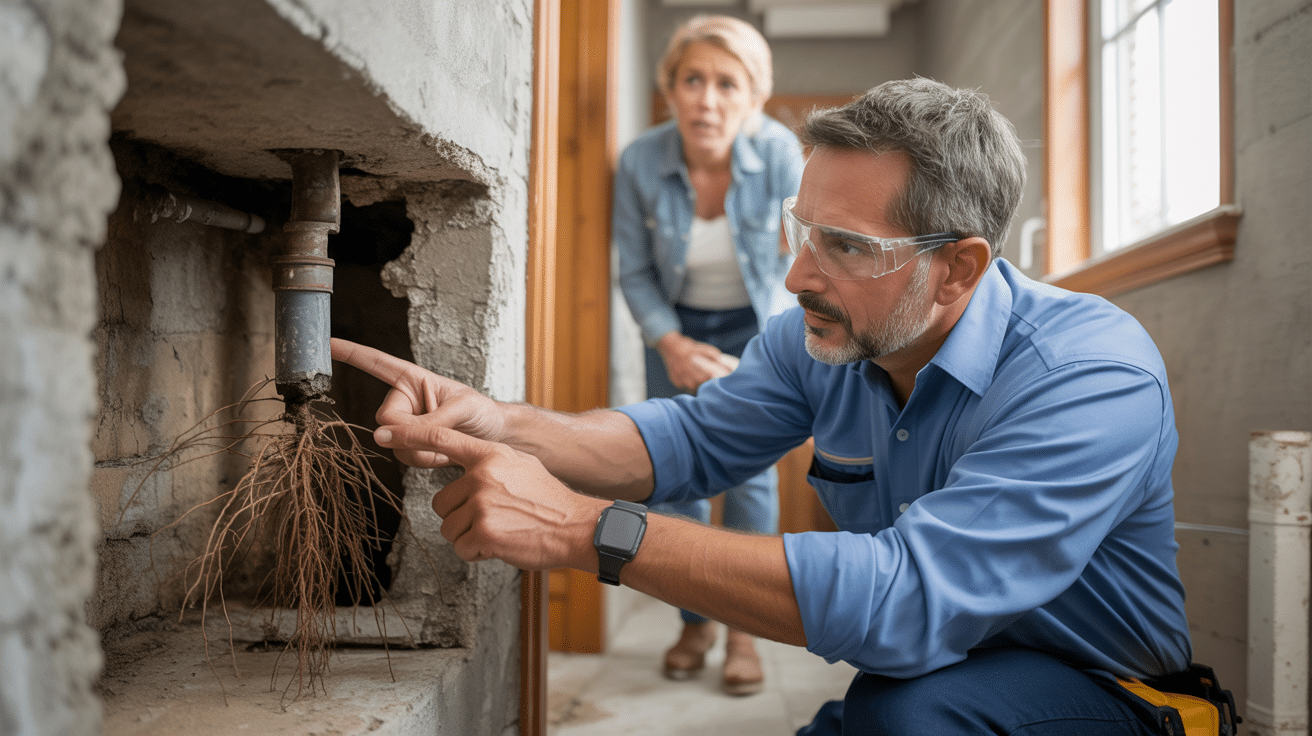
Lasting plumbing work, no matter how minor, comes from pro-level prep—because time spent in anticipation is time not spent on future repairs. Veteran fitters don’t rush; they systemise and slow right down before a single pipe is cut or a tap turned. Here’s how to borrow that discipline, whether you’re fixing a tap, rerouting pipework, or scheduling a bathroom refit.
Nothing slows a project like the shortcut you thought was saving time. Ten minutes of checking beats ten hours of repairs.
Adopt the Pro’s Checklist—Every Time
1. Triple Isolation and Verification
Never trust a single stopcock. Trace every branch, every isolator, every appliance valve. In flats, this isn’t just polite, it’s damage limitation—unwanted floods don’t care who left the secondary open.
2. Only Use Certified, WRAS-Approved Parts
WRAS-approved isn’t just bureaucratic—UK law and insurers stand behind it. Keep packaging for every fitting, even replacement washers. You can substitute (sometimes), but you can’t fudge compliance.
3. Pressure Test and Leak Test
Fill and hold pressure before boxing anything in. Find and address the smallest weep right away—those missed leaks are otherwise found months later, and never before the damage is obvious or expensive.
4. Diagram and Logic Map Your Pipes
Draw it, trace it, test every live line before you break a joint. Common UK properties hide surprises (legacy metals, unknown branch-offs) that textbooks and YouTube never cover.
5. Know Where the Legal Boundaries Lie
If it’s a gas appliance, an unvented cylinder, or any work needing a compliance certificate—don’t touch it unless certified. Photograph unknowns, pause, and get advice. Repairs are cheaper when not done twice, and inspectors always ask for proof.
6. Document Everything
Job photos, before/after videos, measurements, and part codes—nothing backs you up like a clear audit trail. Disputes, complaints, and even property sales go your way when you have a record.
Preparation sounds slow, but it’s this defensive, thorough approach that separates a “quick fix” from a system that runs trouble-free for years. The pros you see finishing a job fast are the ones who spent the most time setting it up right.
Which plumbing jobs can UK owners legally tackle—and what crosses the line into risk?
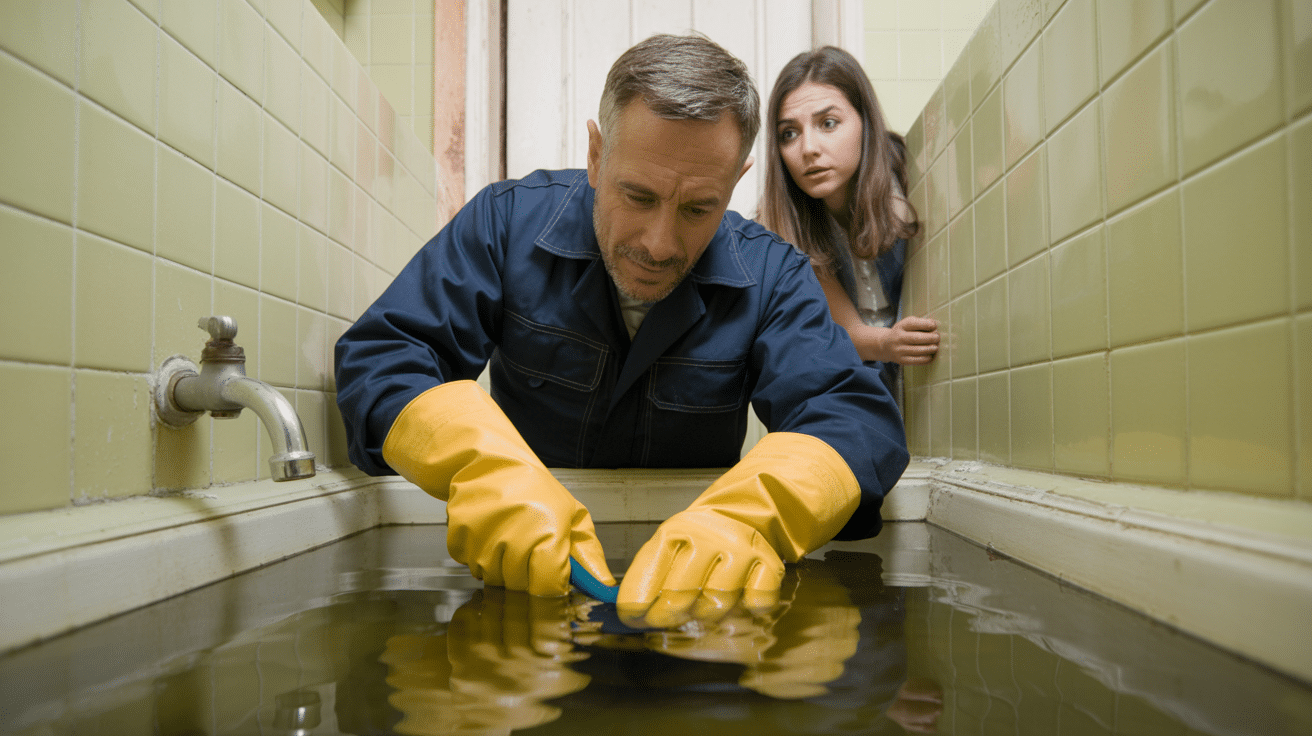
Nearly every owner, landlord, or property manager will at some point face the pressure to “just do it myself.” But the law—not to mention insurance, Building Regulations, and UK water authority compliance—draws very clear boundaries. What’s “maintenance” to you might be a compliance breach to an auditor. One unchecked job can halt a sale, end a warranty, or bring expensive rectification.
The big risk isn’t getting caught—it’s discovering your insurance won’t pay and you’re now responsible for the fallout.
Safe DIY: Legal and Low-Risk Jobs
Stick to these, and you’re inside UK rules:
- Swapping taps, showerheads, or basin washers
- Replacing like-for-like visible flexi-hoses or appliance hoses
- Unblocking household waste pipes or traps (not main drains)
- Tightening up exposed, non-integral joints or fittings
If it’s above-board and fully accessible, you’re generally safe.
Jobs That Must Be Left to Certified Pros
The following require credentials and proof (WRAS, G3, Gas Safe, Part P, etc.):
- Any gas works: boilers, fires, even gas hobs
- Unvented hot water cylinder instals, repairs, or disconnects
- Adding or diverting central heating or hot water systems
- Any electrical works in a bathroom, kitchen, or above water (Part P)
- Major drainage or communal/stack work (flats in particular)
- Any task that ultimately needs a compliance sign-off or certificate
- Upgrades that push you past original system spec
If you hesitate or need to check, it’s time to call in help or the local authority. The cost of getting it wrong shows not in the moment—but in voided claims and blocked sales years down the line.
How Proof Protects You—Now and Later
Keep receipts, photo records, and digital logs. If the issue ever goes to an insurer or regulator, the burden of proof is always on you. By documenting, you shield yourself from later disputes over who did what, when, and to what quality standard.
When in doubt, get documentation and certified input now. It’s a fraction of the cost of a forced, after-the-fact rectification.
What warning signs mean you need a professional—fast?
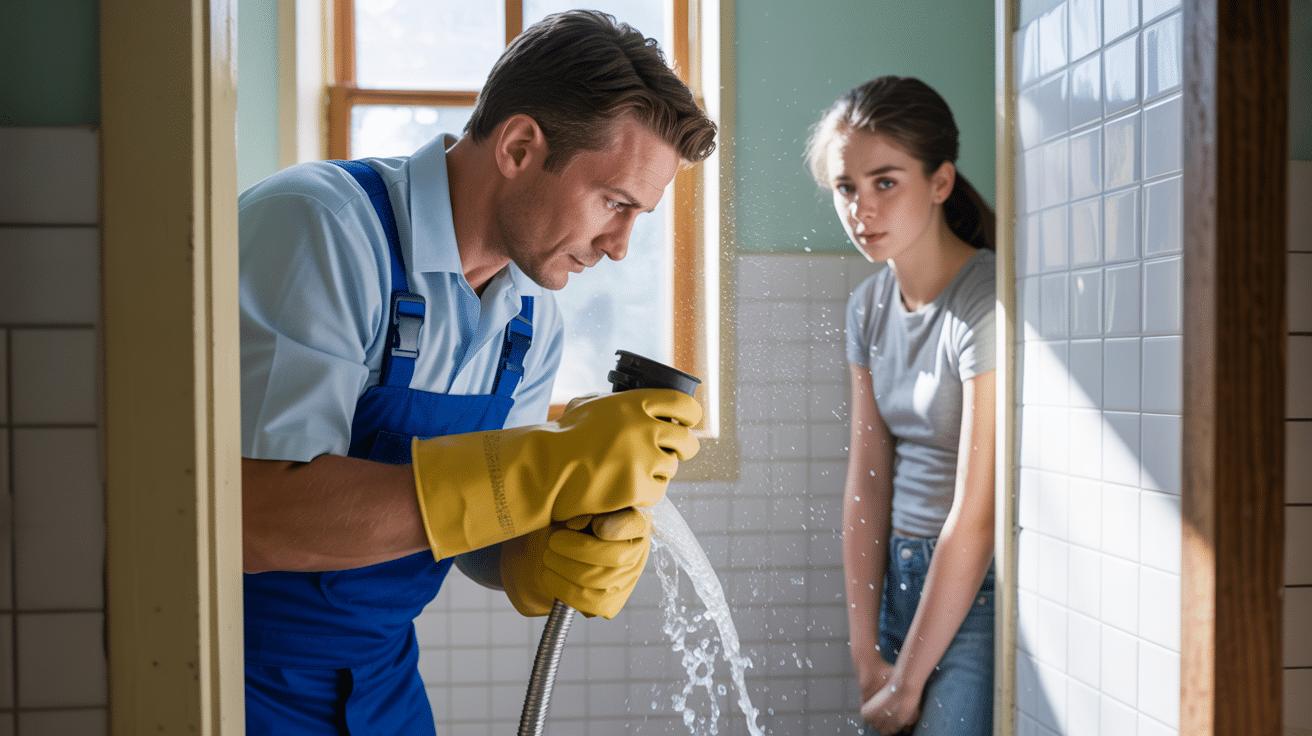
Every ambitious DIYer believes most problems just need “one more tightening” or a better YouTube tutorial. In reality, certain symptoms point to a deeper system fault, or cross the line into legal risk or asset damage where only a pro protects you. The cost of pride is rarely visible in the moment, but it always comes due.
The biggest bills are racked up when just one more look turns into hidden damage.
Clear Signs You’re Over Your Head
- Persistent damp or slow-growing stains below bathrooms and kitchens, despite recent DIY
- Ongoing pressure loss, repeated bleeding, or worsening cold spots in heating
- Unexplained noises: banging, hammer effects, or ghostly drips in the walls/floors
- Lingering musty, stale, or earthy odours—often from pipework boxed into timber
- Weak, spluttering, or unpredictable flow from outlets (taps, showers)
- Heating or hot water that never seems evenly distributed (manifolds, zones)
- Pipes, valves, or metalwork you cannot trace or name—especially in older buildings or converted flats
If you’re letting a property or running managed premises, add further risk layers: late fixes or system failures affect not just budgets and paperwork, but legal standing, tenant safety, and reputation.
The Professional Edge: Why Certified Matters
- *Leak tracing*: using acoustic or thermal tools before any destructive access
- *System mapping*: accurate tracing of runs, isolators, and communal supplies
- *Compliance proof*: photo-logged, certified parts list for each intervention
When you see trouble but not the cause, the most cost-effective path is to get a WRAS- or WaterSafe-certified engineer in—before “a quick look” becomes another claim denial or too-late phone call. Documented intervention is your shield at audit time.
What does DIY plumbing really cost when things go wrong?
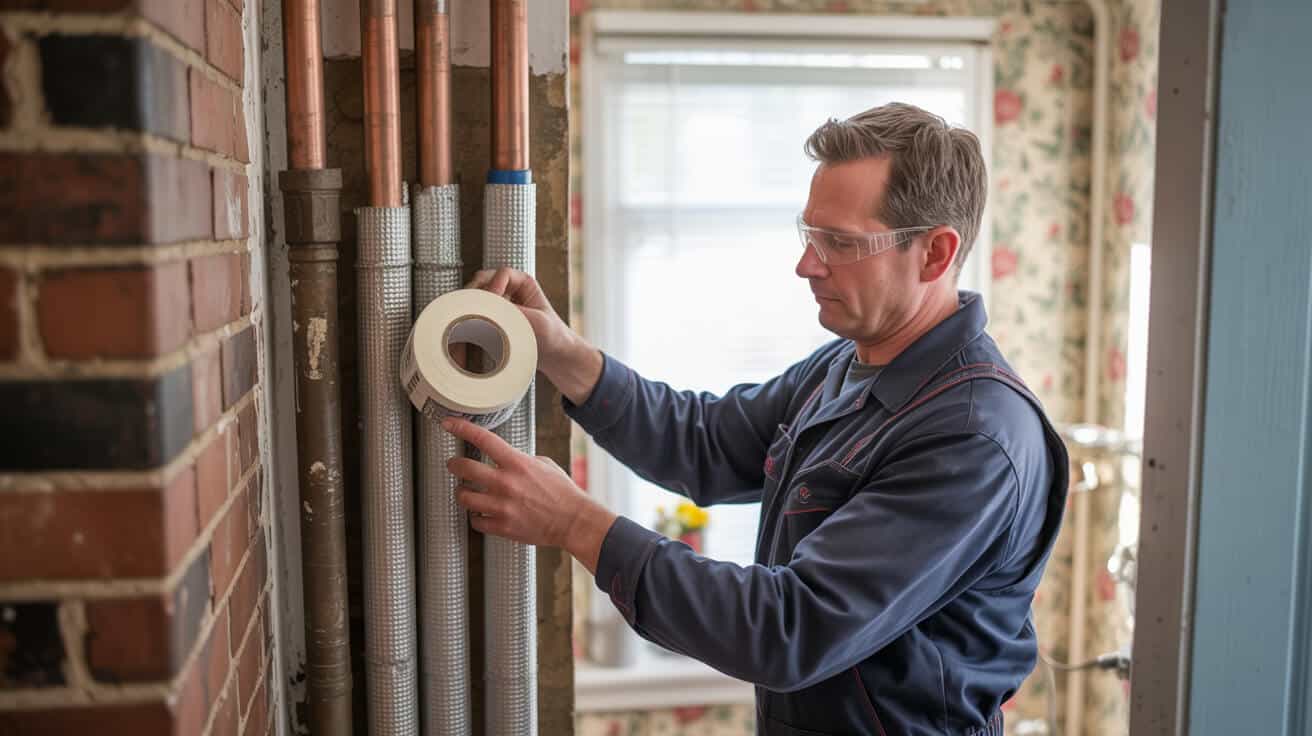
“Saving” money by fixing issues yourself only adds up if nothing goes wrong. But UK stats, landlord histories, and property manager case files reveal a harsh truth: what’s missed or botched by beginners nearly always costs more, especially when hidden leaks turn into slow damage or compliance oversight voids a claim.
No cost-saving survives busted floorboards, denied claims, or a multi-property compliance fail.
Typical Mistakes—And What They Cost
| Mistake or Failure | Immediate Repair (£) | Hidden/Follow-On (£) |
|---|---|---|
| Flood/faulty fitting | £120–£300 | £600–£1,800+ |
| Isolation incomplete | £180–£450 | £900–£2,200 (multiple units) |
| Stripped thread/pipe break | £70–£180 | £200–£600 |
| Breach of compliance | £400–£1,500 min | Often “unlimited” |
| Hidden leak/slow damage | £210–£400 | £800–£2,300 (walls/floors) |
Source: UK insurer survey, Water Regs Advisory Scheme (2024)
Factors That Multiply Losses
- Flats with shared services: one missed error escalates to neighbour disputes and big claims
- High-tech or smart controls: added complexity increases callout and repair time
- Skipped paperwork: no WRAS, G3, or Part P certificate = instant insurance doubts
- Delay: minor issues become major water ingress, fungus/microbe risk, and possible rot
The take-home: getting it fixed right—at the first sign of trouble—costs less in every scenario than dealing with the results of rushed, hidden, or half-checked repairs. Documented pro input is your margin of safety, not just a nicety.
Why isn’t DIY plumbing ever as simple as “just follow a video”?

It looks so straightforward on screen, but UK plumbing is where theory meets very messy practice. What’s hidden behind tiles, in crawl spaces, or legacy-riddled pipework never matches textbook diagrams—especially in period homes, conversions, or properties with multiple retrofitted systems.
The textbook won’t warn you about dead legs, random pushfit in copper, or a rogue communal riser.
UK-Specific Complications That Keep Tripping Beginners
System Age and Variation
Modern new builds, 1930s semis, and repurposed Victorian blocks all approach water flow, isolation, and heating differently. There’s no “one-size-fits-all”—and legacy work leaves surprises at every turn.
Material Combinations
Old meets new everywhere: copper and plastic, pushfit and solder, steel mixed in with brass or plastic. Not only does this complicate fitting and testing, it increases risk of corrosion and incompatibility—all invisible until the day you’re chasing a persistent leak.
Pressure and Flow Anomalies
Identical-looking properties can diverge massively on pressure, flow sequencing, and over/under sizing. Videos omit the reality of local water authorities, riser pressure, and diverse historic upgrades.
Missed Compliance and Documentation
UK Building Regs (G, H, P), WRAS, G3 for unvented cylinders: you can’t fudge them or gloss over the paperwork. No proof, no compliance—leaving you exposed when you sell, renew insurance, or pass tenant checks.
The only “shortcut” is humility and smart prep: double-check systems, accept when a job is outside your lane, and lean on certified help when in doubt. It’s not a failing to call for backup—it’s a sign of a responsible owner or manager.
What’s a real checklist for any plumbing work, regardless of size?
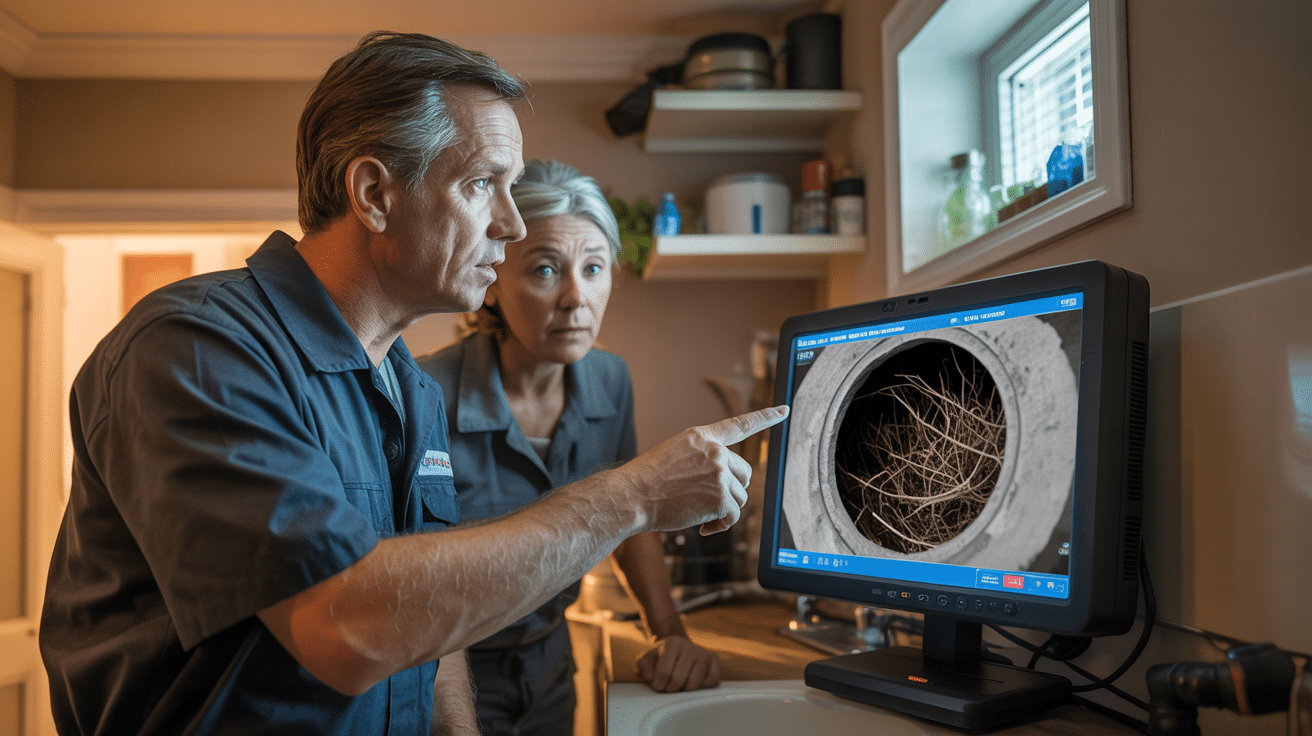
Success starts before you even turn a wrench. The best pros never skip their pre-task routine, because the risks are not just water-related. They touch hygiene, compliance, and your entire asset value. For landlords, even more is at stake—one skipped item means paperwork drama or legal trouble at audit time.
The only checklist worth anything is the one that means no call-backs, no client surprises, and no stress during inspection.
The Lock-Tight Seven-Step Prep Guide
- Isolate supply—then physically test every outlet
Never assume a valve works. Test, drain, check again. Flats and commercial sites have hidden links. - Walk the pipe run—map visible and hidden supply/waste
Surprises hide behind boxed chases and false walls. Note every junction and branch. - Note legacy and risk points—lead, steel, and unusual valves/materials
If there’s doubt, photo it and pause. Legacy work is where most disasters hide. - Source only WRAS-approved, compatible replacements
Right now—never swap to “whatever fits” off the van or internet. - Reference all legal requirements and documentation
WRAS, Building Regs, manufacturer handbooks, and permit notifications as needed. - Never go past what you’re certified for
Unvented, gas, communal stack—let a pro handle it. It’s not just safer, it’s non-negotiable for compliance. - Plan and protect the work area
Dustsheets, exit clearance, all rubbish out. A pro sets the scene for both work and the aftercare handover.
This approach cuts problems before they start. For property managers and landlords, it future-proofs compliance, and for hands-on owners, it makes every fix a step toward greater peace of mind.
How does choosing a WRAS-approved or certified plumber protect your asset, reputation, and sanity?
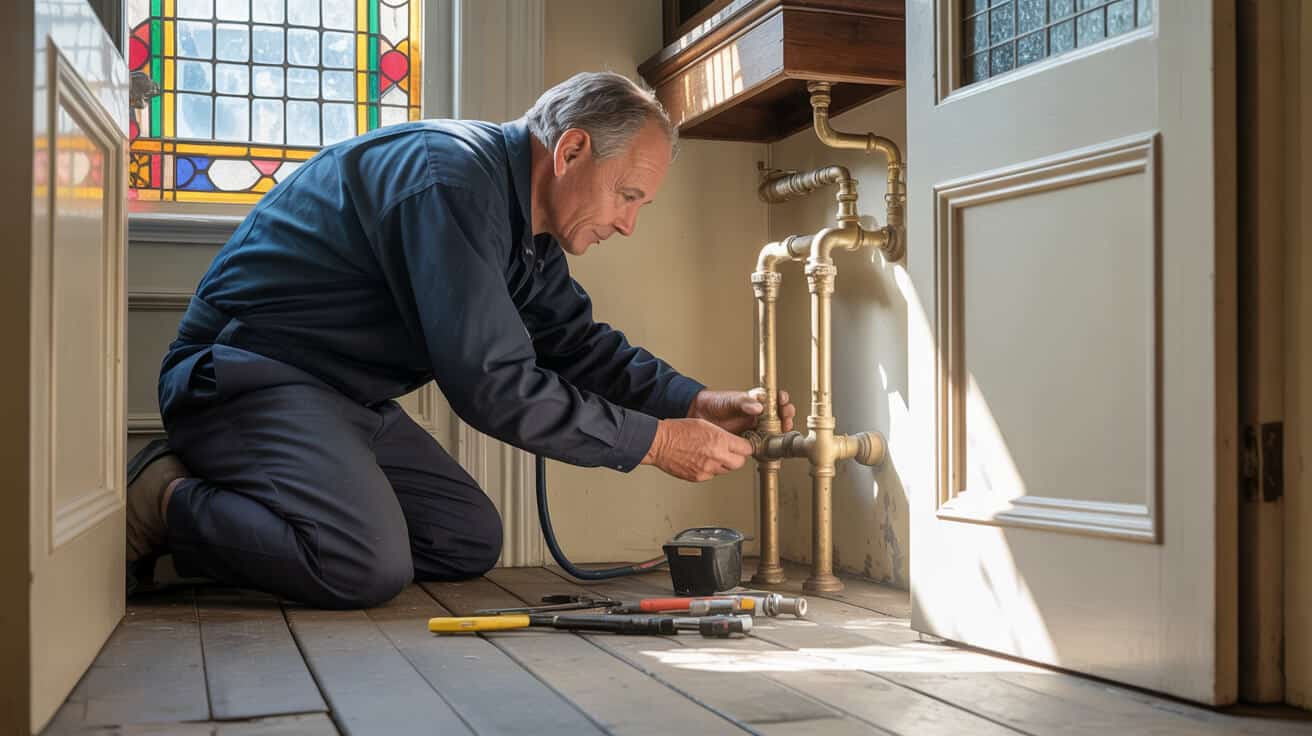
A certified plumber does more than swap a washer or stop a leak—they build a compliance shield you’ll lean on at every future audit, handover, or sale. In an era where every property move and insurance renewal asks for evidence, having every job logged, photographed, and part-coded is protection money well spent.
When it’s your asset, your tenant, or your business’s reputation on the line, certified work is your sleep-easy guarantee.
The Proven Benefits—Why Credentials Always Win
1. Documented Compliance for Every Job
Each repair, instal, or replacement carries a paper (or digital) trail: part numbers, photos, signed logs. This is currency for insurance, sales, or any compliance checkpoint.
2. Active Risk Management
Experts flag risks before disaster—hidden points of backflow, early-warning signs of legionella, parts or layouts that baseline compliance wouldn’t spot. You fix small now rather than chase big loss later.
3. Reliable Callouts and Rapid Solutions
Pros work fast not just because they know the system, but because they’ve mapped and logged every job before you even called. No wild guesses—just diagnostics by the book.
4. Audit-Ready at Any Moment
Portfolio landlords, managers and commercial clients sleep better knowing every invoice and service log is ready for round-the-clock inspection or unexpected events. The result? Property values and tenancies protected, minus legal churn or hurried, awkward paperwork.
Certified work is more than peace of mind—you’re buying time, protection, and a smooth path through the world of UK legislation and property management.
Take action and protect your property with Plumbers 4U
Plumbing is more than a practical trade—it’s a layered defence against avoidable risk, rising costs, and ugly compliance surprises. Plumbers 4U stands apart with WRAS approval, G3 and unvented system certification, and a detailed, professional job log every time. Homeowners, landlords, agents, property managers, and local authorities: your asset deserves both best-in-class workmanship and an audit trail that protects you through every change of ownership or crisis. Ready to shield your property, tenants, and future value from the real pain points of amateur work?
Choose Plumbers 4U—certified, compliant, and always in your corner. Let’s fix more than leaks; let’s secure peace of mind.
Frequently Asked Questions
What hidden plumbing errors cause lasting headaches for UK property owners—and how do problems go undetected until it’s costly?
The biggest threats in domestic and commercial plumbing aren’t loud; they’re subtle, structural mistakes that can quietly devalue your property for years. Most owners and managers overlook isolation gaps, cross-material missteps, or skipped documentation until a small leak or compliance miss becomes a disruptive, expensive ordeal.
The details behind the wall are often where trouble gets its longest lease.
Overlooked Pitfalls That Compound Over Time
- Secondary Isolation Blind Spots: Not every valve or “off” switch cuts all water—the UK’s mixed legacy of building extensions, retrofits, and conversions means supply lines often run through forgotten routes. Miss one, and you risk flooding or hidden leaks that stay live even as you think a repair’s safe.
- Unapproved Mixes and Connections: Blending copper, plastic, and quick-fix connectors can speed up installation, but mismatched materials breed corrosion and irregular flow. Unauthorised pushfit on heating pipes, or using improper sealants, leads to slow failures—the sort insurers quote in their annual warnings to new landlords.
- Pressure and Leak Checks Skipped “Just This Once”: Confidence in your own handiwork feels right—until a single unchecked joint starts a silent moisture build-up, only noticed when plaster stains or neighbouring units report water ingress.
- Documentation Lapses: Lost packaging, missing invoice numbers, or neglected photo evidence means even a flawless job can’t be substantiated for insurance or warranty claims. Buyers or agents demand a clear “paper trail”—if it’s absent, you’re negotiating from a weaker spot.
- DIY in Regulated Zones: Any unauthorised work on unvented cylinders, communal rads, or below ground floor waste routes can get flagged in council audits or property surveys, opening you up to enforcement notices—as confirmed by 11% more post-pandemic compliance actions in 2023 (MHCLG, 2023).
You don’t just risk cost or delay—reputational hits from failed surveys or digital handover audits can derail sales, lettings, or block insurance payouts. If you want every joint and asset to add value, a professional approach from day one is worth its weight in copper.
Which everyday plumbing safeguards do UK professionals always follow, and how can owners adopt them for bulletproof results?
Professionals follow a ruthless process: every line gets tested, logged, and photographed, with every fitting code matched to WRAS or WaterSafe approval. They do this to sleep easy under warranty, audit, or end-of-year compliance. Owners and managers who borrow this discipline build resilience no DIY shortcut can match.
Real peace of mind is built with the steps nobody ever sees—until the day they matter most.
Pro-Level Habits That Make Problems Unlikely
- Confirm Isolation at Every Point: Trust but verify. Even if you believe you’ve turned the supply off, pro engineers double-check every obscure valve, especially where legacy pipework blends with newer instals.
- Parts With a Paper Trail: Keep WRAS or WaterSafe approval as your baseline. Snap and file each receipt, especially for critical components, as insurers now increasingly request proof-of-fit before processing claims (ABI, 2024).
- Pressure-Test Always, Before Hiding Work: Any professional tests for leaks under working pressure before boxing in or tiling over joints. Miss this, and minor seepage can erode blockwork, trigger mould, or corrode fixings for months before surfacing.
- Document With Photos: Capture each stage, not just the finish. This builds a digital audit record for warranty, resale, and compliance—with data now recognised under the UK’s PropertyLog recommendations (UK Gov, 2024).
- Respect Certificate Boundaries: Know your legal edge. If you’re facing unvented hot water, gas lines, or electrical circuits within wet zones, a certified hand isn’t optional—it’s non-negotiable for property value and peace of mind.
Owners who instil these routines rarely face disputes with buyers, agents, or loss adjusters. If any part of the process trips you up, enlist Plumbers 4U—their teams don’t just fix; they document, certify, and protect your asset all the way to transfer or audit.
When does UK law require expert plumbers, and which jobs can owners or agents safely tackle themselves?
UK plumbing regulations are stricter—and more tightly enforced—than many realise. You’re free to swap a visible tap or unclog a basin trap, but the moment your work touches regulated systems (gas, unvented cylinders, control electrics, communal drains) or requires formal certification, ownership changes hands to a licenced engineer.
Liability always finds the person who can’t prove legal compliance—sometimes years after the work is done.
Clear Lines: What’s Safe, What’s Specialist
- Green Light, DIY-Friendly: Replacing visible taps, hand-tight hoses, or cistern levers (like-for-like) is typically legal, provided you can reinstate a working seal and don’t modify regulated pipework.
- Amber Zone: Swapping shower heads or basic traps is usually fine, but any modification in a bathroom near fixed electrics, under a tiled wet zone, or into a communal riser bumps risk—and may trip Part P or Water Regulations.
- Red—Engineer Only: All gas appliance installation, boiler swaps, unvented cylinder repairs (G3 regulations), mains electrics within a wet environment, and all work requiring notification to Building Control falls strictly outside DIY territory. Even partial refits (e.g., a cylinder valve swap) risk severe warranty, insurance, and legal fallout without supporting paperwork.
Landlords and managing agents face unique layers: letting agents must evidence compliance every year, and asset managers risk CP12 or G3 certificate lapses that block new tenants or trigger fines. When in doubt, log your action, then call for advice—Plumbers 4U closes the loop with every credential and submission required.
What are the most overlooked signs that you need to stop DIY and call a certified plumber?
A surprising number of owners and managers normalise the slow return of wall stains, water hammer, or pressure drift—solving the symptom repeatedly but missing the unseen problem. The truth: these are safety valves for deeper faults that only escalate when left to “watch and wait.” The faster you escalate to diagnostics, the lower your risk of asset or compliance loss.
Every recurring fix is a clue the real issue sits deeper—don’t let a small symptom hide a big failure.
Red Flags No Owner Should Ignore
- Staining and Damp That Recurs: Marks on ceilings, under floorboards, or in communal risers after repeated “surface” fixes signals a persistent leak or isolation issue.
- Inconsistent Pressure or Heating: Systems that bleed down, fail to stabilise after a reset, or have rads/zones that stubbornly run cold almost always point to airlocks, misrouted pipework, or hidden blockages.
- Mysterious Pipes and Valves: Any line or branch whose function is unclear—especially in conversions, HMO setups, or communal blocks—means higher risk for undetected failures.
- Pipework Sounds at Strange Times: Random gurgles, clanging, or water hammer in spite of “clear” runs signals pressures, expansions, or mounting issues best solved with professional testing.
- Control and Smart System Glitches: When schedule entries vanish, zone stats drop out, or “smart” setups can’t hold their logic, the real issue is often physical (e.g., failed actuator, wiring issue), not just software—a callout solves it faster and with documented repair.
For commercial managers and landlords, missed escalation triggers can result in significant operational downtime, tenant complaints, or even insurance denial. As 2024 industry audits confirm (BESA, 2024), documented professional input is now critical for any system touching compliance or multi-user supply.
How do small plumbing errors in the UK escalate into major expenses—and what’s the true long-term cost?
Minor mistakes rarely stay that way: a pinhole leak, undocumented instal, or skipped pressure check can multiply into wall restoration, resale-value deductions, or insurance denials months later. The UK’s current market shows the cost leap is brutal: even a £100 missed cutoff can trigger thousands in restoration, lost income, or asset devaluation down the chain.
What begins as a single drip can end as a lost sale, a void tenant, or a cancelled claim.
Breakdown: Where the Money Actually Goes
- Direct Fixes: Fixing a leaky fitting or failed join usually runs £120–£350, but if water travels, the “zone of impact” widens rapidly.
- Insurance Hassles: Once hidden damage is found, surveyors or insurers may tie a claim back to “non-compliant DIY”—denying payout until certified verification or total rework is completed.
- Asset Value Loss: A home or commercial space with a lingering plumbing note or unresolved issue can see 3-7% cuts in valuation at sale; commercial portfolios risk letting prohibition until issued with all safety proofs.
- Legal or Market Barriers: For landlords, non-certified works open you to rent refund claims, letting bans, or forced compliance upgrades rarely covered retroactively by insurance.
- Documentation Domino Effect: Missing a receipt or instal log can void not just your current repair but the next owner’s claim or audit—a scenario that played out in UK ombudsman cases through 2023 (OIA, 2023).
Industry reports put the average compound cost for an unlogged error upwards of £2,000, even when the initial fix was under £200. Where doubt exists, early input from Plumbers 4U halts escalation and locks in asset-ready documentation from the outset.
What measurable value does a WRAS-approved or certified plumber bring to property risk, asset value, and regulatory compliance?
A certified plumbing expert is your “documented resilience” installer: every pipe gets a barcode, every upgrade gets proof, and every fix is mapped against WRAS, G3, and Building Regs. The result isn’t just working water—it’s an asset shielded against audit, lost sale, or denied claim. In a market demanding ever-tighter compliance, this is the line between endless patch-ups and fluid success.
The real value of expertise isn’t just fixing the problem—it’s proving you’ll never have to face it twice.
Certified Approach: What Sets True Pros Apart
- End-to-End Traceability: Engineer logs, manufacturer certificates, and full repair history create a clear value chain for sales, audits, and insurance queries.
- Zero-Gap Legal Cover: Every job runs straight to WRAS, Part G/H/P, and current insurance standards—not just for today but for whatever the next round of audits or transactions requires.
- Proof in High-Stakes Scenarios: When emergencies hit, fast access to logs, instal receipts, and compliance records cuts through red tape—critical for managed portfolios or time-sensitive tenant transitions.
- Asset Value and Market Appeal: Documented professional plumbing can lift surveyor ratings, compress time to sale, and empower faster completions—as confirmed by leading UK estate networks in 2024.
- Enduring Peace of Mind: The best result: silent systems, no complaints, and a file that turns questions into completed checklists.
For owners, letting/managing agents, and local authorities, this means asset protection you can bank, not just hope for. Plumbers 4U wraps every project in this standard—so your reputation, property value, and operational rhythm stay intact, transaction after transaction.
